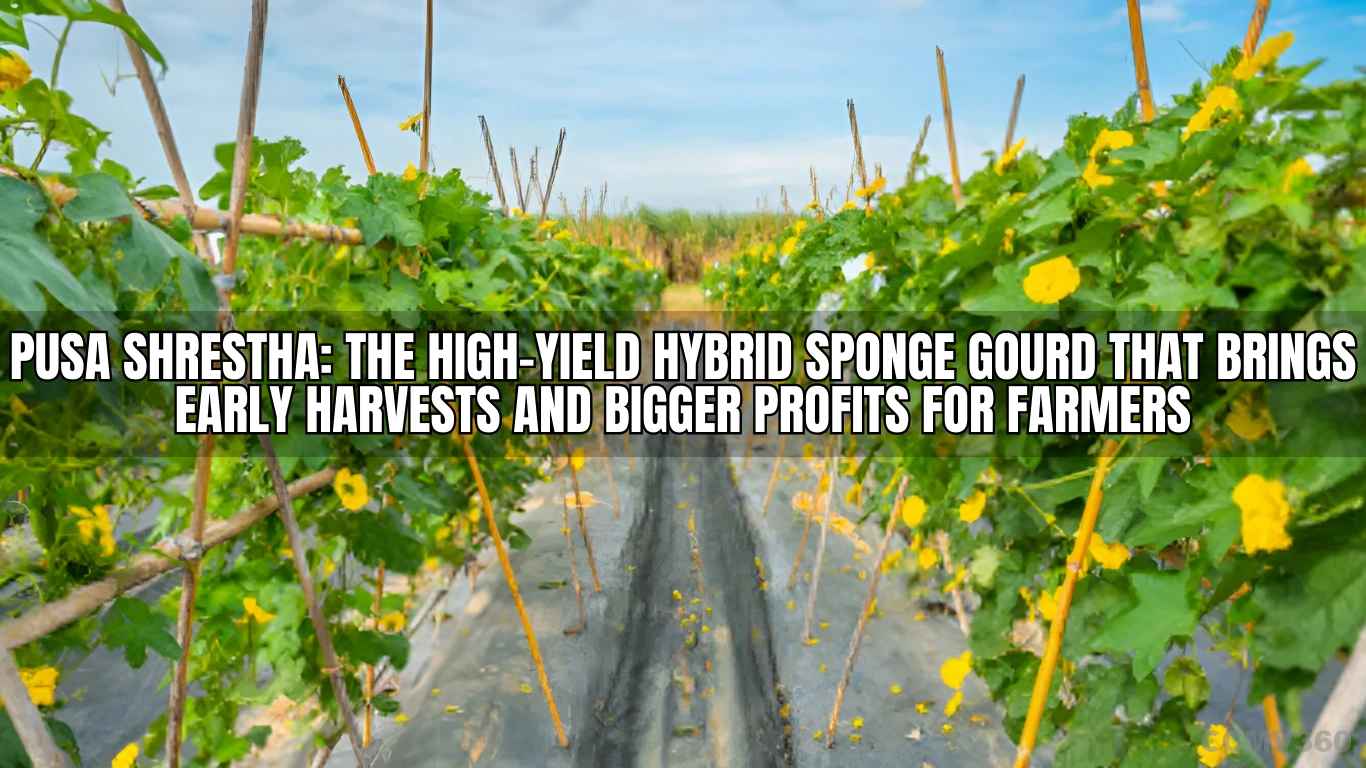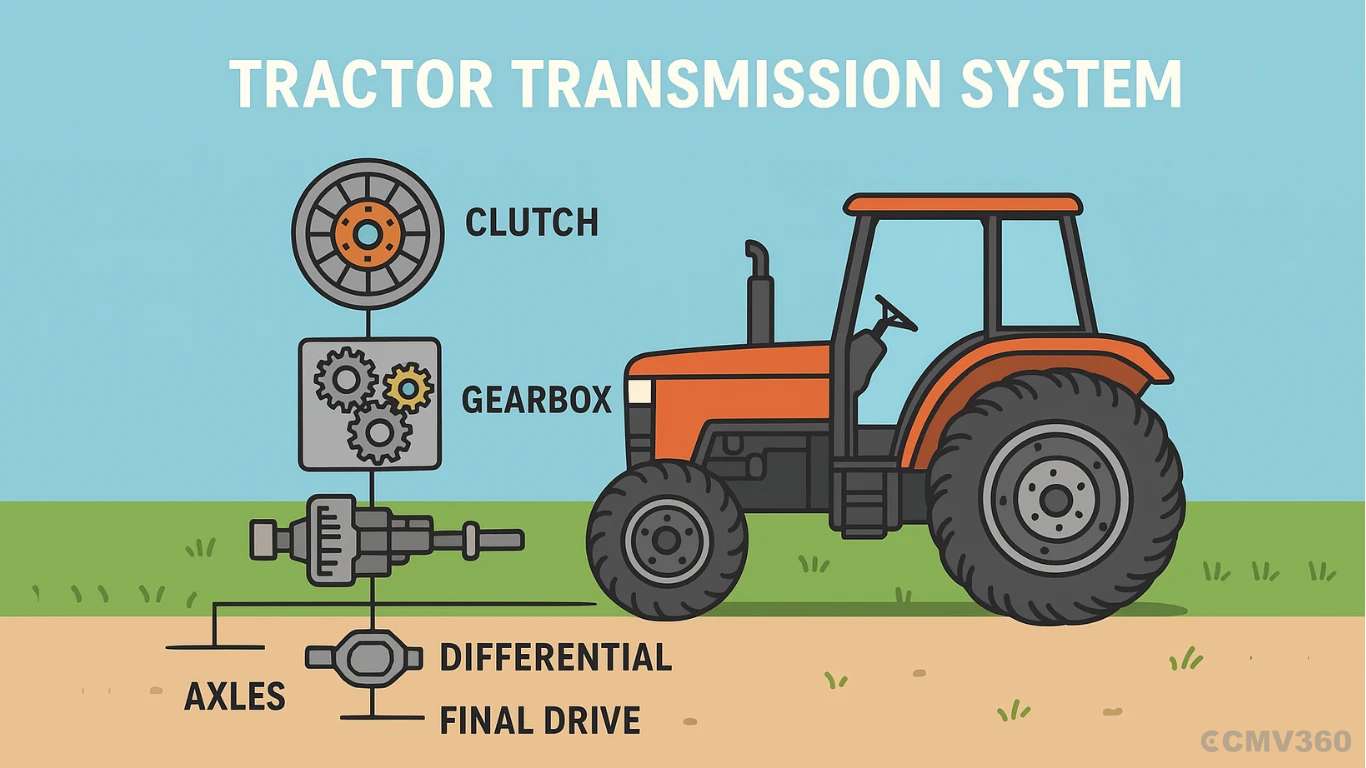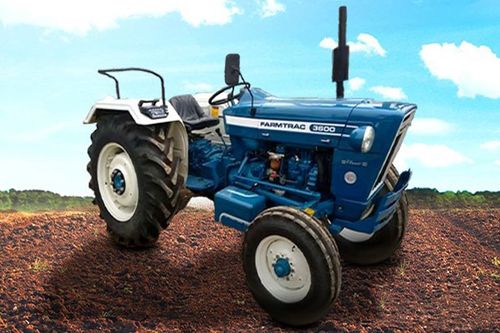Ad
Ad
Pusa Shrestha: The High-Yield Hybrid Sponge Gourd That Brings Early Harvests and Bigger Profits for Farmers

Agriculture has always been the backbone of India’s economy, employing millions and providing essential food for the nation. Over the years, farming has moved beyond traditional practices to adopt modern crop varieties that deliver better yields, withstand diseases, and adapt to changing weather patterns.
One such innovation is in vegetable farming, where quick-growing, high-demand crops give farmers steady incomes. Among these vegetables, sponge gourd—locally known as Chikni Tori, is a favourite. It is valued for its mild taste, tender texture, and easy digestibility. Its popularity means farmers can sell it fresh in local markets or supply it in bulk to wholesale buyers.
Until recently, farmers in North India had limited access to high-performing F1 hybrid sponge gourd varieties, especially for the spring-summer season. The Indian Agricultural Research Institute (IARI) has changed that with Pusa Shrestha (DSGH-9), a game-changing hybrid designed to give early harvests, high yields, and superior fruit quality, even in high-temperature conditions.
This article will explore every detail about Pusa Shrestha, from its unique traits and growing requirements to market potential, profitability, and farmer success stories.
Why Sponge Gourd Farming Matters in India
Sponge gourd is an important part of India’s vegetable basket for several reasons:
Year-round demand – Consumers prefer it for daily cooking, ensuring steady sales.
Short growth cycle – Farmers can fit it between major crops, making it ideal for crop rotation.
Nutritional benefits – Rich in vitamins, minerals, and dietary fibre.
Market flexibility – Sells well in both urban and rural markets.
Low input requirement – Relatively less fertiliser and pesticide compared to some vegetables.
Given these advantages, a high-yield hybrid like Pusa Shrestha can significantly boost farmer incomes.
Development of Pusa Shrestha: Meeting Farmers Needs
The IARI scientists developed Pusa Shrestha (DSGH-9) to solve the challenges farmers faced:
Lack of early-maturing hybrids for the spring-summer season in North India.
Limited heat-tolerant varieties.
Need for uniform, market-friendly fruits.
Desire for disease resistance and higher yield.
Through careful breeding, researchers created a hybrid that matures in just 45–50 days, tolerates high temperatures, and delivers attractive, tender fruits suitable for both local and wholesale markets.
Key Features of Pusa Shrestha
Here’s a quick reference table for the standout features:
Feature | Details |
Type | F1 Hybrid Sponge Gourd |
Breeder | Indian Agricultural Research Institute (IARI) |
Plant Type | Annual, trailing vine |
Stem | Green, pubescent, angular |
Leaves | Medium-sized, orbicular, moderate lobing |
Fruit Shape & Size | Elongated, cylindrical, ~27 cm length, 13 cm girth |
Fruit Surface | Smooth with superficial ribs, thick skin |
Flesh | White, tender |
Average Fruit Weight | ~120 g |
Ends | Both stem and blossom ends are rounded |
Maturity | 45–50 days (spring-summer) |
Average Yield | 19.65 tonnes/ha |
Adaptability | Performs well in high temperatures |
Market Appeal | Uniform, tender fruits with strong demand |
Appearance and Quality: What Makes It Stand Out
Pusa Shrestha fruits are uniform in size and shape, with a smooth surface and appealing green colour. The white, tender flesh is ideal for cooking, and the rounded ends make them look premium, an important factor for market pricing.
These features help farmers get better rates in markets compared to irregular or rough-textured sponge gourd varieties.
Early Harvest: A Farmer’s Advantage
One of Pusa Shrestha’s biggest strengths is its early maturity. In just 45–50 days after sowing, farmers can start harvesting, especially in the spring-summer season.
Why Early Harvest Matters:
Beats market competition – Farmers can sell before peak supply drops prices.
Faster cash flow – Early sales mean quicker returns on investment.
Multiple harvests possible – More production in a year increases income.
Yield Potential: More Output from the Same Land
In official trials (2021–2023), Pusa Shrestha produced an average yield of 19.65 tonnes per hectare, outperforming many existing varieties.
For farmers, this means:
Higher production per season.
Increased earnings without extra land.
Better utilisation of labour and inputs.
Ideal Growing Conditions
Pusa Shrestha grows well in both spring-summer and rainy seasons across North Indian plains.
Soil Preference
Type – Well-drained loam or sandy loam.
Preparation – Add 20–25 tonnes of well-decomposed organic manure per hectare before field preparation.
Sowing Time
Season | Sowing Window |
Summer Crop | Mid to late February |
Rainy Crop | End of June |
Seed Rate
2.5–3 kg seeds per hectare.
Treat seeds with 2 g Captan or Thiram per kg before sowing.
Spacing
Row-to-row: 3.5–4 meters.
Hill-to-hill: 60–75 cm.
Fertiliser and Nutrient Management
For optimal growth and yield, Pusa Shrestha requires:
Nutrient | Dosage (per ha) | Application Method |
Nitrogen (N) | 100 kg | Half at field prep, half 30 days after sowing & before flowering |
Phosphorus (P) | 80 kg | At the field preparation |
Potassium (K) | 60 kg | At the field preparation |
Irrigation Schedule
Summer – Frequent watering to maintain soil moisture.
Rainy Season – Light irrigation only when needed, avoid waterlogging.
Method – Irrigate through channels to prevent direct water contact with stems.
Crop Care and Maintenance
Earthing up – Especially important in the rainy season to prevent root exposure.
Hoeing & Weeding – 2–3 sessions to keep the field weed-free.
Pest and Disease Management
Pusa Shrestha is relatively hardy, but preventive care is important.
Common Pests
Pest | Management |
Fruit Fly | Remove affected fruits, use poison bait, set light traps, and spray Malathion (2 mL/litre water). |
Common Diseases
Disease | Solution |
Powdery Mildew | Spray Bavistin 0.1–0.2% twice at 10-day intervals. |
Downy Mildew | Spray Ridomil (0.2%) or Dithane M-45 (0.2%) every 8 days. |
Fusarium Wilt | Drench the soil with Bavistin. |
Mosaic Virus | Uproot infected plants; spray Imidacloprid, Dimethoate, or Metasystox. |
Harvesting Guidelines
Harvest when fruits are immature and tender for the best market quality.
Regular picking encourages more fruit production.
Use plastic crates with fillers for transport to prevent damage.
Post-Harvest Handling
Avoid gunny bags as they can bruise fruits.
Store in a cool, shaded area before selling.
Economic Benefits: Profit Analysis
Let’s estimate potential profits for a farmer with 1 hectare of Pusa Shrestha:
Parameter | Value |
Average Yield | 19.65 tonnes |
Market Price (per kg)** | ₹20 (average seasonal rate) |
Gross Income | ₹3,93,000 |
Production Cost (approx.) | ₹80,000 |
Net Profit | ₹3,13,000 |
(Prices vary by region and season)
Market Potential
High demand in both rural and urban markets.
Suitable for retail, wholesale, and contract farming.
Export possibility to nearby countries where the sponge gourd is popular.
Case Study: Farmer Success with Pusa Shrestha
Ramesh Singh, a farmer from Uttar Pradesh, planted 1 hectare of Pusa Shrestha in February.
Began harvesting in just 47 days.
Sold the first batch at ₹25/kg before prices dropped.
Achieved ₹3.5 lakh profit in a single season.
Noted better fruit uniformity and lower pest attacks compared to older varieties.
Advantages at a Glance
Benefit | Impact |
Early Maturity | Quick returns |
High Yield | More income per land unit |
Heat Tolerance | Reliable in summer |
Uniform Fruits | Better market rates |
Disease Resistance | Reduced losses |
Also Read: Top 15 Powerful Superfoods to Boost Your Immunity and Stay Healthy
CMV360 Says
Pusa Shrestha is more than just a new variety, it’s a profitable solution for farmers looking for early harvests, high yields, and premium market prices. Its adaptability to high temperatures, resilience against diseases, and attractive fruit quality make it ideal for commercial farming.
For farmers in the North Indian plains, adopting Pusa Shrestha could mean higher productivity, better income, and a stronger market presence. In a time when agricultural success depends on efficiency and quality, Pusa Shrestha delivers both.
Features & Articles
Mastering Tractor Power: Complete Guide to Transmission System, Parts, Types & Functions for Smarter Farming
Learn about the tractor transmission system, its parts, types, and functions. Understand how clutches, gearboxes, and axles work together for better tractor performance....
03-Nov-25 12:33 PM
Read Full NewsInternational Day of Awareness of Food Loss and Waste 2025: Promoting Sustainable Food
Explore the importance of the International Day of Awareness of Food Loss and Waste 2025, its theme, impact, and solutions for building sustainable, efficient, and equita...
25-Sep-25 10:01 AM
Read Full NewsMore Work with Less Diesel: 7 Easy Tips to Increase Tractor Mileage and Save Farming Costs
Follow 7 simple tips to improve tractor mileage, save diesel, and lower farming costs. Learn about the top mileage tractors in India for 2025 and make farming more profit...
17-Sep-25 07:25 AM
Read Full NewsHow to Service a Tractor at Home: Top 5 Easy Tips for Farmers
Learn 5 easy tractor servicing tips at home to save money, improve engine performance, and extend tractor life. Simple steps for oil, filters, radiator, greasing, battery...
09-Sep-25 12:53 PM
Read Full NewsHidden Cost of Buying a Tractor in India Every Buyer Must Know About
Learn about tractor hidden costs like registration, insurance, implements, fuel, and maintenance to plan your budget smartly and avoid unexpected expenses....
12-Aug-25 01:22 PM
Read Full NewsHow to Save Your Tractor Clutch from Early Damage: Easy Tips for Long Life and Smooth Farming
Prevent early clutch failure in tractors with easy maintenance tips and daily checks for better performance and longer life....
04-Aug-25 11:59 AM
Read Full NewsAd
Ad
As featured on:


Registered Office Address
Delente Technologies Pvt. Ltd.
M3M Cosmopolitan, 12th Cosmopolitan,
Golf Course Ext Rd, Sector 66, Gurugram, Haryana
pincode - 122002




















